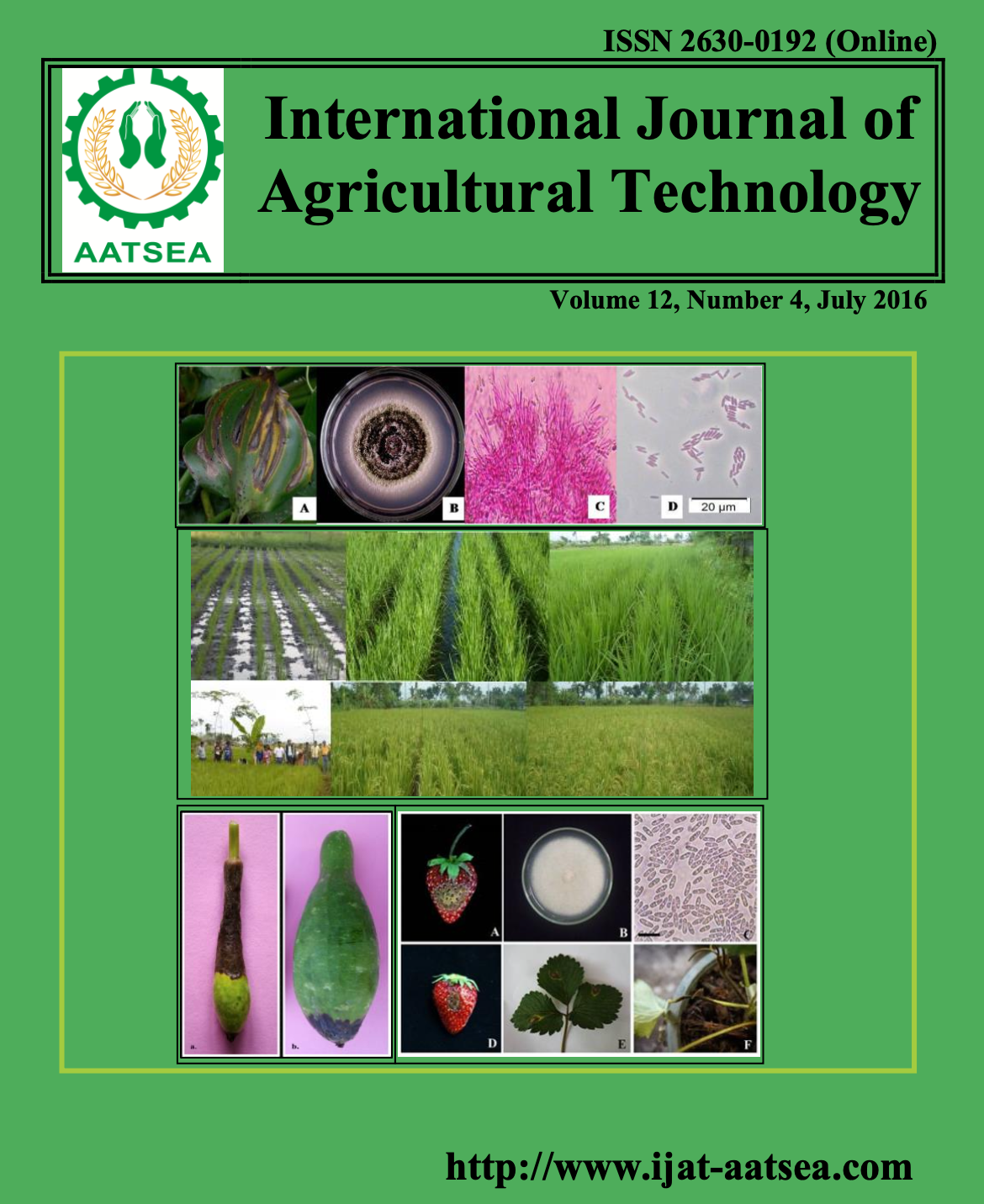Effect of various planting media on growth of Thao Yai Mom (Tacca Leontopetaloides ktze.)
Main Article Content
Abstract
Article Details

This work is licensed under a Creative Commons Attribution-NonCommercial-NoDerivatives 4.0 International License.
References
FAO (1976). Prognosis of salinity and alkalinity. FAO Soil Bulletin 31. FAO, Rome.
Hershey, D. R. and Sand, S. (1993). Electrical conductivity. [Online] : http://www.angelfire.com/ab6/hershey/saec.pdf. (September 6, 2015).
Koolpluksee, M. (2013). Growth of thao yai mom (Tacca leontopetaloides Ktze.) on loam soil and sandy soil planting media. Research Report, Division of Crop Production and Landscape Technology, Faculty of Agro-Industrial Technology, Rajamangala University of Technology Tawan-Ok at Chanthaburi Campus, Chanthaburi.
Lecturers from Department of Soil Science. 1998. Soil science. 8th ed. Kasetsart University Press, Bangkok.
Luangaram, K. (2006). Influence of planting media on yield and quality of cherry tomato (Lycopersicon esculentum Mill.), cv. red sweet. M.S. Thesis, Khon Kaen University, Khon Kaen.
Nuntagij, I. N.D. Substrate culture. Retrieved from : http://www.kmitl.ac.th/hydro/Substratdoc.htm. (July 18, 2012).
Ratneetoo, B. (2012). Organic fertilizer improves deteriorated soil. Princess of Naradhiwas University Journal 4:115-127.
Ritthiruangdej, P. (2003). Physical and chemical properties of thao yai mom flour and its utilization in kanom chan dessert. M.S. Thesis, Kasetsart University, Bangkok.
Sinthavalai, S. (1982). Flour in food at "Kanom Thai", food theory, volume 3: principle of food trial. Voravuthi Printing Company Limited, Bangkok.
Soil, Fertilizer, and Environment Academic Development Programme. N.D. The manual of pH test kit for soils (single solution No.4). Department of soil science, Faculty of Agriculture, Kasetsart University, Bangkok.
Pattrasudhi, S. N.D. Thao yai mom plant: a new source of extra income. The Botany and Weed Science Division, Department of Agriculture, Bangkok.
Pattrasudhi, S. (2000). Thao yai mom, an interesting tuberous crop. The Botany and Weed Science Division, Department of Agriculture, Bangkok.
Wongtong, O. and Poonpholkul, K. (2001). Cooking principle. Kasetsart University Press, Bangkok.
Yingjajaval, S. (2011). Use the correct type of organic matter. [Online] Retrieved from: http://www.cab.ku.ac.th/suntaree/pdf/54OrganiMatterExplain.pdf. (July 18, 2015).
Yuvaniyama, A. (2015). Solutions to saline soil problems. [Online] Retrieved from:
http://www.ldd.go.th/Lddwebsite/web_ord/Technical/pdf/P_Technical03001_1.pdf.


